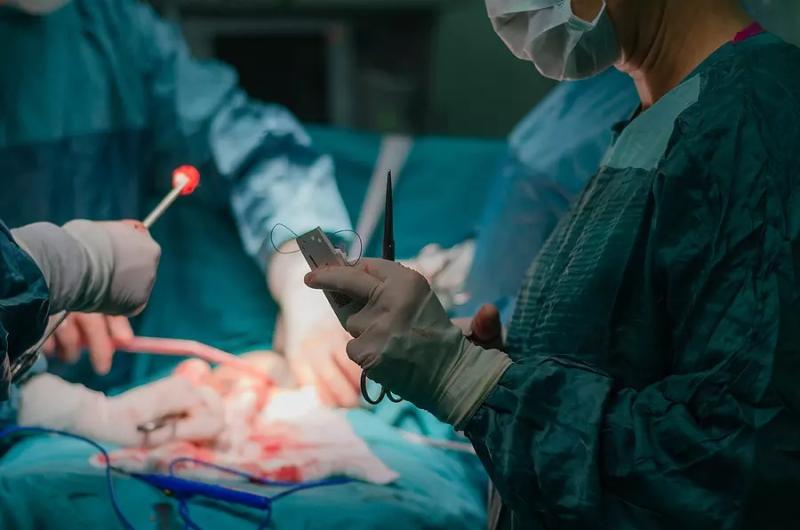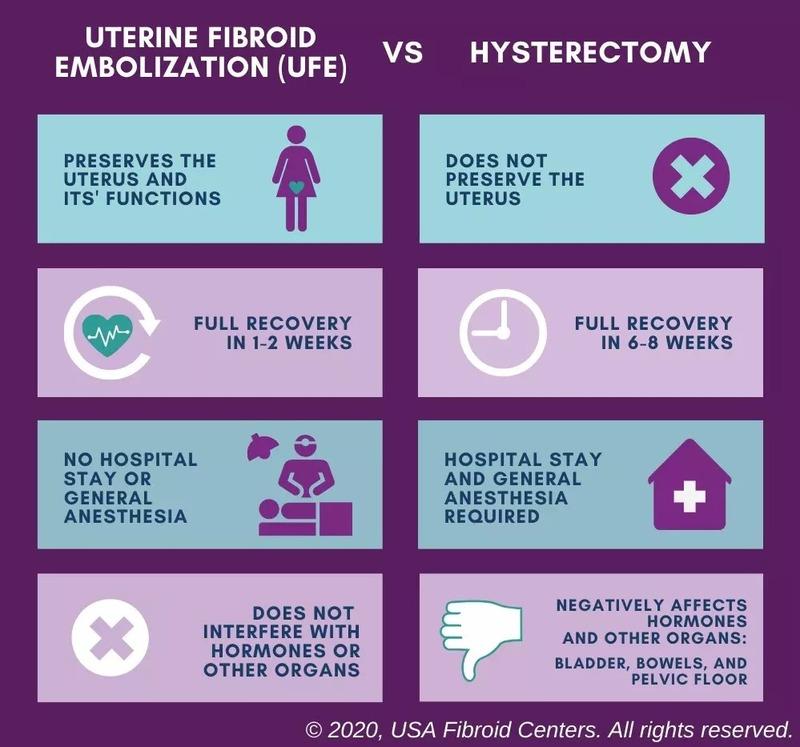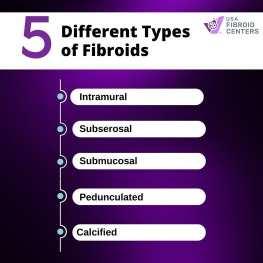Success Rates and Benefits of Uterine Artery Embolization

Uterine fibroids are non-cancerous growths in the uterus that can cause a variety of symptoms, including heavy menstrual bleeding, pelvic pain, and bloating. When seeking treatment options, many women come across two key minimally invasive procedures: Uterine Artery Embolization (UAE) and Uterine Fibroid Embolization (UFE). Although often used interchangeably, there are some distinctions that women should understand before deciding which procedure best suits their needs. Let’s break down the difference between UAE and UFE to help guide you through this critical decision.
What Is Uterine Artery Embolization?
Uterine Artery Embolization (UAE) is a minimally invasive procedure that aims to reduce blood flow to the uterine arteries, which supply blood to both normal uterine tissue and uterine fibroids. By blocking these arteries, the procedure cuts off the fibroids' blood supply, causing them to shrink over time. This procedure is done by an interventional radiologist who inserts a catheter into the uterine artery and delivers embolic agents that block the blood flow to fibroids.
What Is Uterine Fibroid Embolization?
Uterine Fibroid Embolization (UFE) specifically targets uterine fibroids. Like UAE, it involves using tiny particles to block the blood flow to fibroids, causing them to shrink. However, UFE is more fibroid-specific, meaning the primary focus of the procedure is treating fibroids rather than reducing overall blood supply to the uterus. An interventional radiologist also performs UFE, making it a similar but more specialized procedure compared to UAE.
Uterine Artery Embolization: How It Works
During Uterine Artery Embolization, the physician makes a small incision in the groin or wrist to access the femoral or radial artery. Using imaging guidance, a catheter is threaded into the uterine artery. Small particles are injected to block the blood flow, resulting in the shrinkage of both fibroids and, to some extent, the uterus itself.
The reduction in blood flow leads to a decline in fibroid-related symptoms, such as heavy bleeding and pelvic discomfort. This procedure is considered effective for women who want to avoid hysterectomy and preserve their uterus, though pregnancy after UAE might still present some challenges.
Benefits of Uterine Artery Embolization
There are several benefits of choosing uterine artery embolization as a treatment option for fibroids:
Minimally Invasive: UAE is an outpatient procedure that requires a
very small incision, resulting in less recovery time compared to traditional
surgical methods.
No Need for Major Surgery: UAE is a great option for women who wish
to avoid hysterectomy or myomectomy.
Symptom Relief: It helps reduce or eliminate symptoms like heavy
menstrual bleeding, pelvic pain, and pressure.
Fertility Preservation: Although pregnancy after UAE is possible,
it may come with risks. However, UAE allows for uterus preservation.
Uterine Fibroid Embolization: A Closer Look
UFE is a highly targeted form of UAE that focuses specifically on fibroids. The approach is similar in terms of procedure; the catheter is inserted into the uterine artery, and particles are injected to block the blood supply. The primary difference is that UFE is exclusively intended to treat fibroids, not the entire uterus.
By cutting off the blood supply to fibroids, they shrink, and symptoms such as heavy periods, pelvic pain, and frequent urination subside. The procedure has been around for decades and has been highly effective in helping women avoid more invasive surgeries.
Benefits of Uterine Fibroid Embolization
Choosing uterine fibroid embolization over surgical methods offers several advantages:
Targeted Approach: UFE directly addresses fibroids while
preserving other parts of the uterus, which can be ideal for women who may want
future pregnancies.
Faster Recovery: UFE is minimally invasive, allowing for quicker
recovery and minimal downtime.
Symptom Reduction: Most women report a significant decrease in
fibroid-related symptoms within weeks to months of the procedure.
Avoids Major Surgery: UFE provides a nonsurgical option, helping
women avoid the risks and recovery times associated with a hysterectomy.
Differences Between UAE and UFE
While the procedures may seem identical, there are some subtle
differences between uterine artery embolization and uterine fibroid
embolization:
Target Area: UFE is more focused on fibroids specifically, while
UAE targets the blood supply to the entire uterus. UFE is considered more
precise in terms of fibroid treatment.
Applications: UAE is sometimes used for conditions beyond
fibroids, such as postpartum hemorrhage or adenomyosis. In contrast, UFE is
solely used to treat fibroids.
Symptom Relief: Since UFE targets fibroids specifically, it may
provide more focused symptom relief, whereas UAE affects the uterus as a whole.
These differences help doctors recommend the right procedure based on a patient’s individual condition.
Who Is a Candidate for UAE?
Women suffering from fibroid-related symptoms but wishing to avoid a hysterectomy may be ideal candidates for uterine artery embolization. Women who have multiple fibroids or fibroids in specific locations that could complicate surgery may benefit from this non-invasive procedure. Additionally, women looking to preserve their fertility but concerned about the invasiveness of other treatments may also consider UAE.
However, UAE may not be ideal for women with very large fibroids or those who plan to get pregnant soon, as the impact on fertility can be uncertain.
Who Is a Candidate for UFE?
If you are experiencing symptoms like heavy bleeding, pelvic pain, or urinary frequency due to fibroids, uterine fibroid embolization could be the right option for you. UFE is a great alternative for women who want to avoid invasive surgery, like hysterectomy or myomectomy, but still want significant relief from fibroid-related symptoms.
Women considering UFE must consult their physician to determine if their fibroids are suitable for this procedure.
Recovery and Success Rates
Both UAE and UFE are outpatient procedures, meaning patients typically go home the same day. Recovery times are short, usually between 7 to 10 days, but some women may experience mild cramping or discomfort for a few days post-procedure.
The success rates of both procedures are high. Studies have shown that 85-90% of women experience significant symptom relief from both UFE and UAE. However, UFE's targeted nature often results in more direct symptom relief related to fibroids.
Final Thoughts: Which Option Is Best for You?
When deciding between uterine artery embolization and uterine
fibroid embolization, it's important to understand your personal needs and
long-term health goals. UAE can address a wider range of conditions but may
impact the entire uterus, while UFE is specifically focused on treating
fibroids. Both offer excellent, minimally invasive alternatives to traditional
surgery, providing significant relief from symptoms and faster recovery times.





Comments